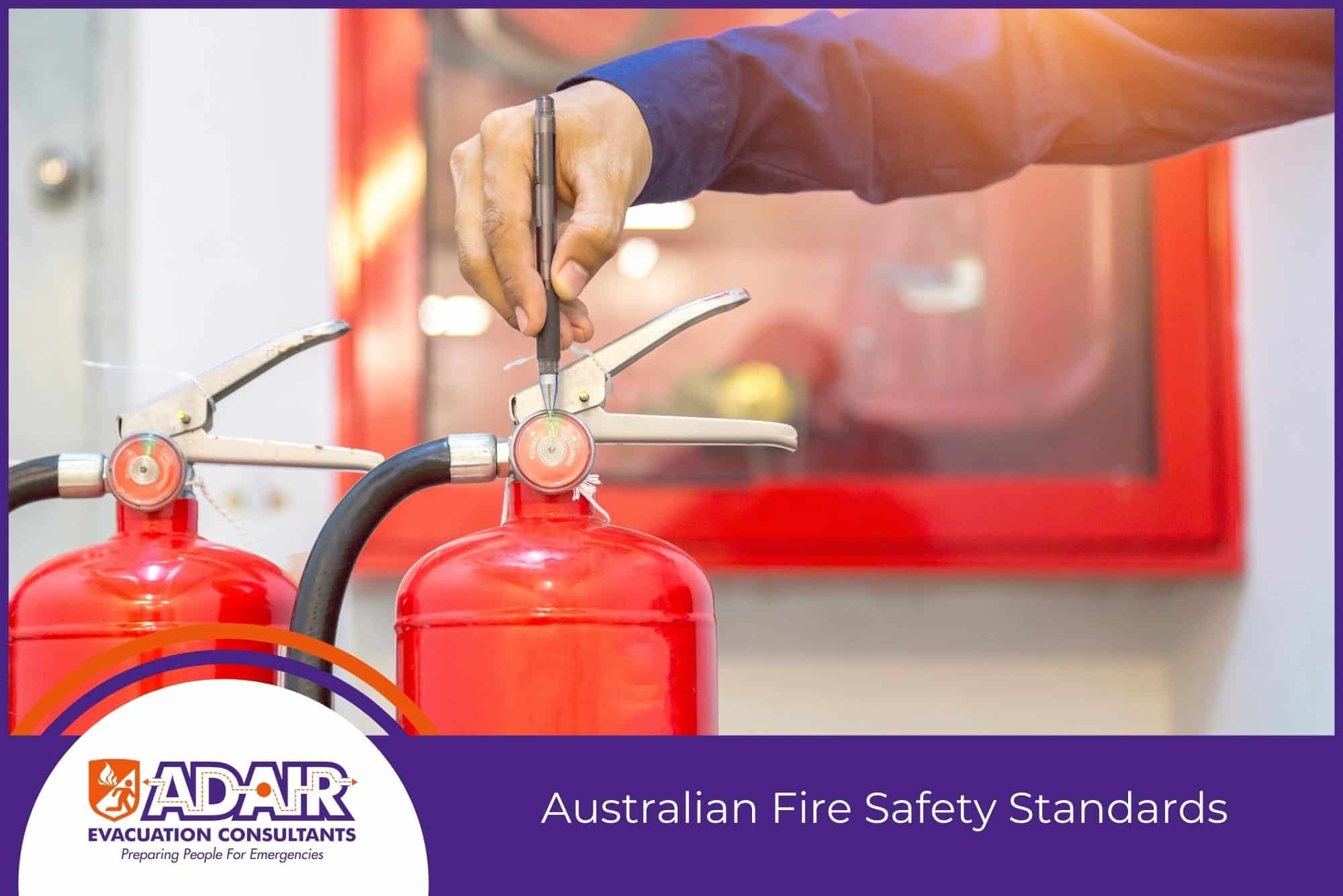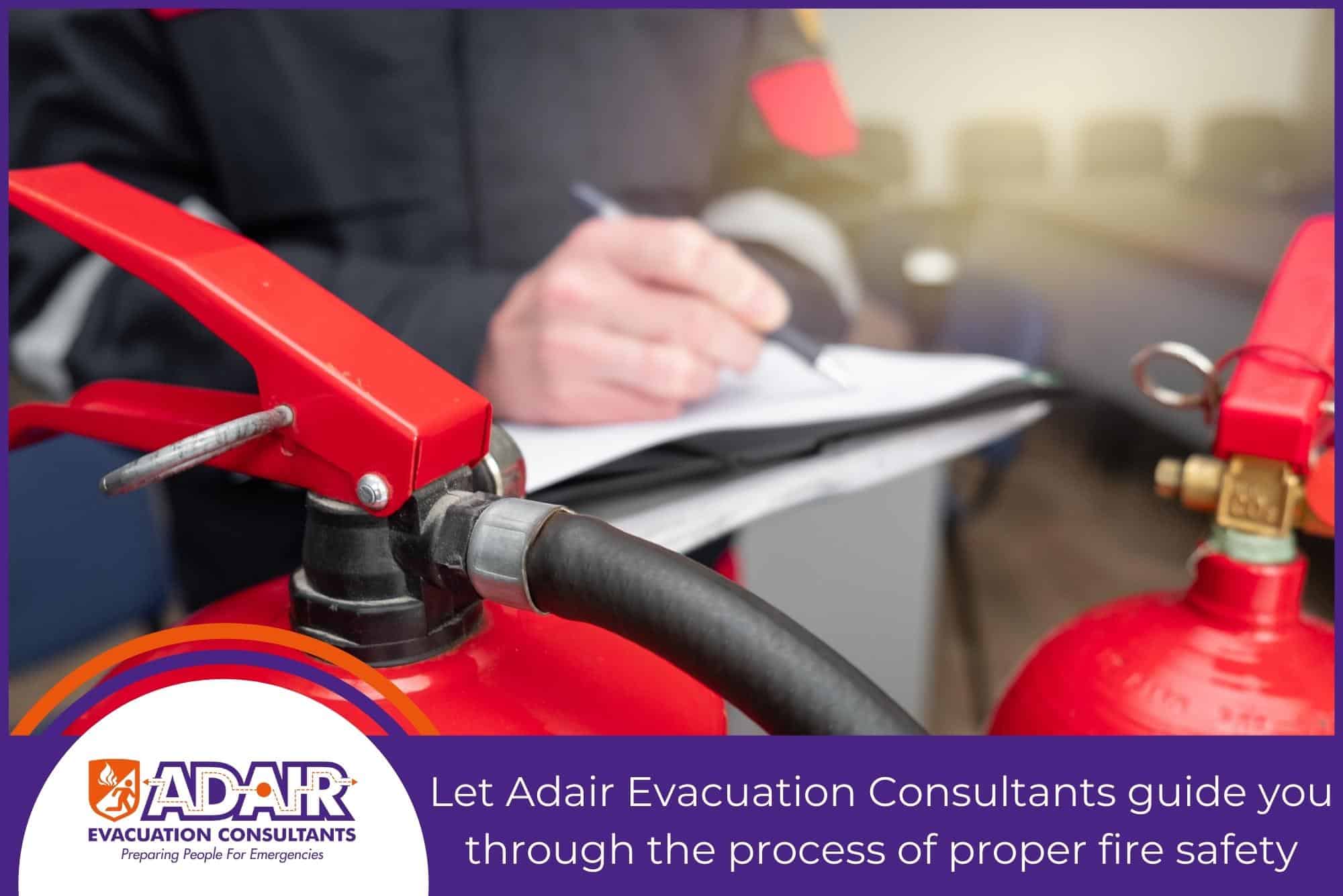A complete guide to fire safety in your building and its compliance with national regulations
“By failing to prepare, you are preparing to fail” – Benjamin Franklin
In Australia, there are numerous written legislations which dictate to businesses and building owners the specific regulations they must uphold for fire safety and protection within their premises. These regulations and applicable legislations are put in place to ensure that in the event of a fire emergency or hazard, fire safety measures are available and readily protect the premises and its occupants.
The regulations can vary from state to state, but all hold the same basic premise in terms of required equipment, quality assurance testing and compliance reporting. Ensure that you check the applicable legislation and regulations in your state or territory to ensure you remain compliant.

Australian Fire Safety Standards
Australian Fire Safety Standards are a group of legislative requirements that dictate how fire protection methods and measures should be designed, implemented and maintained on premises. The individual standards are broken down by specific codes to identify each one. They are constantly being updated, so be sure to check that you are always referring to the most current version of the standards. A full list of the applicable Australian Fire Safety Standards can downloaded online.
Why are the set of Australian Standards important?
The Australian standards set a benchmark for Australian businesses regarding how they should conduct themselves when it comes to fire safety provisions and fire protection in the workplace – with concrete minimum standards across all industries, there is little room for confusion.
All Australian standards are shaped by current legislation as set out by the Australian government bodies. The standards provide businesses with a reliable benchmark to measure against, so that more effort is placed on improving fire safety for all employees and employers.
Compliance with Australian Standards also adds liability protection to your business by proving that your business premises meet the minimum fire safety standards, should anything fire related occur.
The National Construction Code
The National Construction Code (NCC) is a legally enforceable regulatory document that outlines the standards to be followed in terms of building and construction within new and existing premises. It is applicable to new constructions, additions and alteration to existing buildings, as well as upgrades to change the use of a building.
The document contains technical provisions about design, construction and performance of buildings, their plumbing, and drainage. It is divided into three performance-based volumes that cover specific information: Volume 1 and 2 cover the Building Code of Australia (BCA) and volume 3 covers the Plumbing Code of Australia (PCA).
The NCC is maintained by the Australian Building Codes Board (ABCB) on behalf of the federal government and relevant state and territory authorities. It is updated every 3 years to ensure that it stays in line with current building practise and procedures.
Why is the NCC applicable to fire safety?
The NCC outlines the technical standards to be followed by builders for construction with a focus on safety (including structural safety and safety from fire). When construction of a new premises commences, there are specific fire safety requirements outlined within the NCC that must be addressed to ensure the safety and protection of the building and its occupants.
Background of the NCC and fire safety
While the NCC first edition was developed off the Environmental Planning and Assessment Act 1979, regulations regarding fire safety have been around for nearly 2000 years worldwide. The development of regulations is based on past experiences, research and political expediency.
Looking back through history, the Great Fire of Rome (64 A.D.) which engulfed the city, burning for 6 days and destroying over 70% of Roman districts, was the start of fire safety regulations. As a result of the catastrophe, Emperor Nero created an urban development plan with new houses to be built from brick and spaced out to reduce the risk of similar tragedies occurring. Fire safety has been of paramount importance for millennia.
Fire safety and the NCC
There are two primary requirements of the NCC fire safety provisions;
- To facilitate safe evacuation of building occupants.
- To minimise property damage.
Modern buildings generally contain a combination of individual fire safety measures to form a full fire safety system, and fire safety measures may be considered active or passive, depending on how individuals interact with them in a fire emergency.
Active fire safety measures are those that are triggered when exposed to smoke, heat or flame and can be manually operated. Passive fire safety measures are those that don’t respond or activate but are installed to assist in reducing the risk of harm during a fire emergency.
Fire safety measures
There are numerous examples of fire safety measures that need to be applied to your premises to protect against fire hazards, both active and passive. Some of these include;
- Automatic fire detection and alarm systems
- Portable fire extinguishers
- Automatic fire suppression systems
- Exit signs
- Emergency warning systems
- Fire doors
- Hose reel systems
- Fire blankets
- Smoke detectors
- Emergency sprinkler systems
- Evacuation signage and plans.
While this is not a fully exhaustive list of all of the fire safety measures available, it does comprise of the most common ones. Not all fire safety measures will be applicable to your business depending on size, layout and individual circumstances, however it is important that you meet the minimum standards of fire safety protection as outlined by Australian Standards legislation, as well as the National Construction Code.
Application of the Australian Standards and NCC to your business
Employers have a duty of care to provide employees and visitors with a safe and comfortable work environment. While fire safety overall is everyone’s responsibility and everyone can remain vigilant, it is an employers’ responsibility to ensure that adequate fire safety measures are in place in the premises. This means you should:
- Ensure that your business has functional and serviced fire alarm systems e.g. smoke alarm, sprinkler system, alarm warning system.
- Have an adequately displayed evacuation plan diagrams with all exits clearly marked
- Provide an emergency assembly area.
- Carry out regular drills undertaken every 6 months.
- Place fire extinguishers in clearly visible locations and train staff to use the appropriate apparatus for specific circumstances.
- Ensure that fire safety exits are not blocked, so they are readily accessible in the event of an emergency.
- Have a fire safety inspection company such as Adair Evacuation consultants conduct regular maintenance checks on all equipment to ensure that it meets minimum Australian Standards and is regularly serviced.

Let Adair Evacuation Consultants guide you through the process of proper fire safety
Fire safety isn’t something that should be ignored, especially in the workplace, and the best protection against fire emergencies is prevention. At Adair Evacuation Consultants, we specialise in assisting organisations to prepare for fire emergencies.
We can provide comprehensive emergency management programs, training and support as well as compliant safety diagrams, signage and evacuation equipment. With experienced staff and a commitment to safety, Adair Evacuation Consultants should be your first choice when it comes to fire safety. Contact our team online by clicking here today or call us on 1300 213 000.


